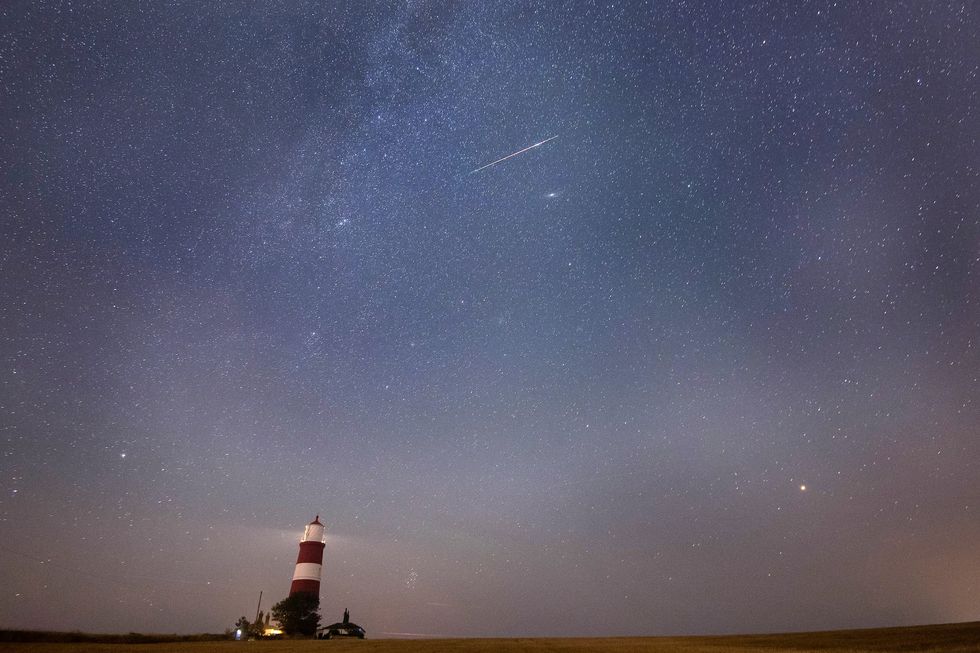Skies across the globe are set to be filled with scores of “fireball” shooting stars this coming weekend as the Taurid Meteor Shower passes Earth.
Burning up as they pass through Earth’s atmosphere, meteors will light up the night sky this week but will reach its peak on November 12 and 13.
WATCH HERE: SpaceX rocket launch
Shooting stars will be visible until December 10 in the Northern Hemisphere but will be most numerous this coming weekend (Nov 12/13)
PA
“When the Earth passes through the cloud of debris left behind by a comet or asteroid in our solar system, pieces of rock and dust will be swept up, crashing into our atmosphere and producing a bright streak of light in our sky: a meteor,” he said.
“These meteor showers occur at somewhat predictable times in our year and will appear to originate from a particular part of our sky based mostly on the direction the Earth is travelling in at the time.”
The Taurid Meteor Shower gets its name as it appears to emerge from the Taurus constellation.
However, both the meteor stream and the Encke comet are believed to have once been part of a much larger comet which broke apart some 20-30,000 years ago.

Stargazers could catch up to five shooting stars every hour when the shower hits its peak
PA
Dr Brown added that this year won’t be as good a year for seeing the meteor shower compared to previous showings.
“This shower isn’t particularly strong with only around five meteors per hour at its peak which can be reduced greatly by your observing conditions,” he said.
He continued by giving advise on the best place for potential viewers to see the Taurid Meteor Shower.
He said: “To see them, head out to a place with a low horizon, with no trees or buildings in the way, ideally after midnight to maximise your chances.
“Fill your view with the sky and wait.
“There’s no point trying to use a telescope or a pair of binoculars as their view is far too small.”

Dr. Thomas Hughes is a UK-based scientist and science communicator who makes complex topics accessible to readers. His articles explore breakthroughs in various scientific disciplines, from space exploration to cutting-edge research.








